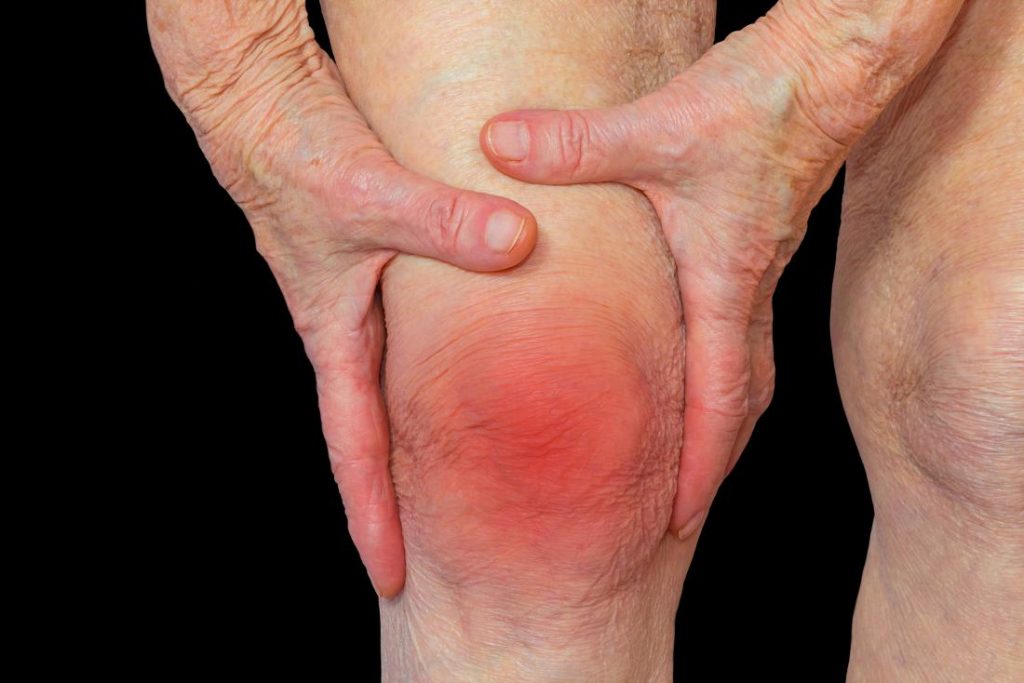Knee pain is the commonest problem suffered by all age groups. There are many causes of knee joint pain; they can be an injury or some medical conditions. Knee pain can be managed by self-care also but it works only for minor types of knee pain. Physical therapy and knee braces can also help in relieving knee pain or surgery can also be done. However, not all knee joint pains are severe.
Symptoms Of Knee Pain
Depending on the cause of the problem, the locality and the severity of knee pain differs. Signs and symptoms of knee pain are
- Swelling
- Stiffness
- Redness
- Weakness
- Instability
- Warm on touch
- Popping and crunching noises
- Inability to fully straighten the knee
Causes Of Knee Joint Pain
Causation of knee pain can be injury, mechanical problems, arthritis and some risk factors.
1. Injuries

The knee injury can affect the ligament, tendons and bursae that are fluid-filled sacs surrounding the knee joint.
- ACL injury:- ACL injury is the info to articulate cruciate ligament (ACL) that contains thigh bones and shinbone. This injury can be seen commonly in basketball players or other sports that require changes in direction.
- Fractures:- breaking of the bone of knee and patella bone due to accidents like a collision of bikes.
- Torn meniscus:- meniscus is formed of rubbery and tough cartilage between the shinbone and thigh bones. It can be torn by a sudden twist while bearing weight.
- Knee bursitis:- injuries by inflammation of fluid-filled sac (bursae) surrounding the knee joint.
- Patellar tendinitis:- inflammation of the tendon that connects the bones to muscles. Runners and cyclists are more likely to have this injury because of jumping involved.
2. Mechanical Problems

Mechanical problems causing knee pain are as follows:-
- Loose body:- degeneration or injury to bone or cartilage can break off one piece of bone that can float in the knee joint. This loose body interferes with knee movement.
- Iliotibial band syndrome:- iliotibial band is the tough band of tissue that extends from outside of the hip to outside of the knee. This band becomes tight and rubs against the bones.
- Dislocated kneecap:- In this, the bone in front of the knee joint that is patella slips out of place. This is dislocation or displacement of the kneecap.
- Hip and foot pain:- when there is a pain in hip and foot we tend to change our walk which puts stress on the knee that causes the knee pain.
3. Arthritis

Arthritis is the pain and swelling of the joints. There are more than 100 different types of arthritis. Below below-mentioned types are the most common types causing knee pain.
- Osteoarthritis:- also known as degenerative arthritis which is the commonest type. Due to wear and tear of cartilage threat is deteriorated with use or age this can be caused.
- Rheumatoid arthritis:- is an autoimmune disease that can cause pain or damage to any joint.
- Gout:- this occurs when uric acid crystals build up in the joint.
- Pseudogout:- it is caused by calcium crystals that are developed in joint fluid. It is often mistaken as gout.
- Septic arthritis:- as known as a joint infection which is an invasion of a joint by an infectious agent that causes joint inflammation.
Risk Factors

- Overweight:- Being overweight can put pressure on the joint during regular activities such as walking. This can breakdown the cartilage and increase the risk of Osteoarthritis.
- Lack of muscle strength:- Risk of knee injury is increased due to a lack of muscle flexibility and strength.
- Sport/occupation:- Certain sports or occupations can put pressure on the knee that can cause knee injury.
- Previous injury:- If you have the previous injury then you’re most likely to injure your knee again.
Conclusion
Knee joint pain is common in all age groups. It can be the result of an injury and many medical conditions. But it’s not always possible to prevent it. For minor knee injury, you can take self-care but for major, you need to see a doctor. When you can’t beat the weight on the knee, you have knee swelling which is marked, you’re unable to fully extend your knee, you have a fever with redness, pain, and swelling in the knee or you have severe pain that is due to any injury it’s better to consult a doctor for proper treatment for knee joint pain.







